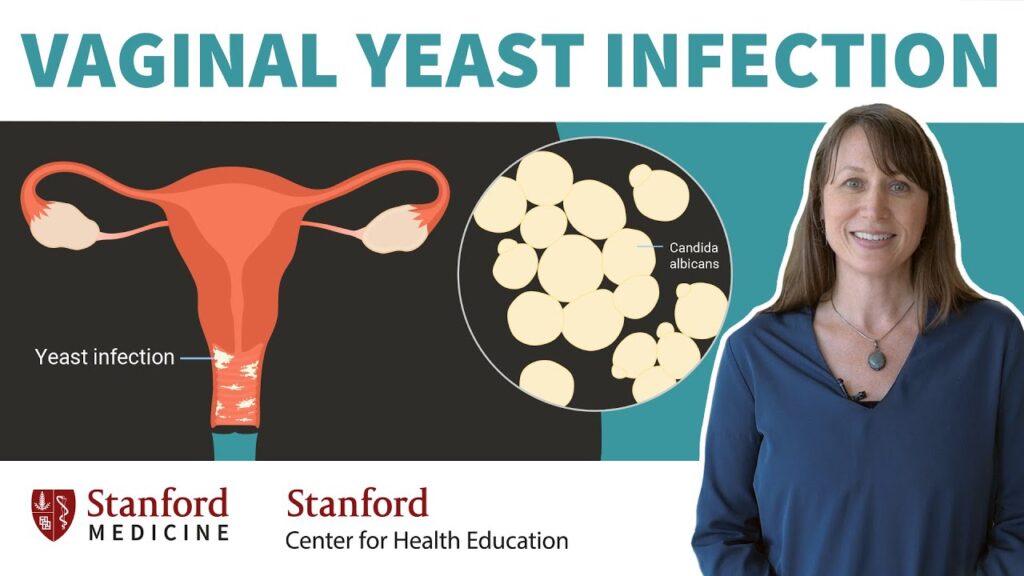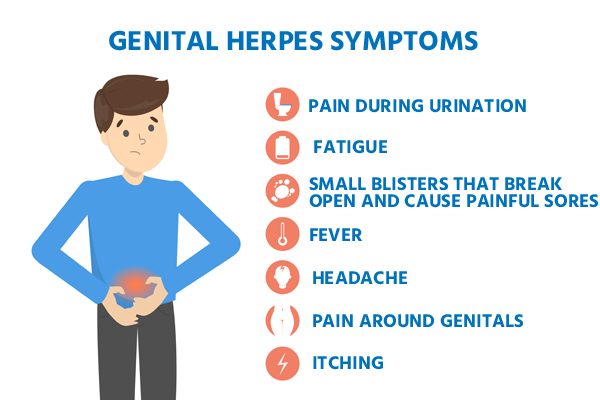Yeast infections and herpes are two common conditions that can affect the genitals. While they may have similar symptoms, they are caused by different types of viruses and require different treatments. Understanding the differences between these two conditions is important for accurate diagnosis and effective treatment.
What is a Yeast Infection?

A yeast infection, also known as candidiasis, is a fungal infection caused by the overgrowth of the yeast Candida. Candida is a type of fungus that is naturally present in the body, but when it overgrows it can cause symptoms such as itching, burning, and discharge. Yeast infections are most commonly found in the vagina, but they can also affect the penis and other parts of the body.
What causes a Yeast Infection?
There are several factors that can contribute to the development of a yeast infection. Some of the most common causes include:
- Antibiotic use: Antibiotics can disrupt the balance of bacteria in the body, allowing Candida to overgrow.
- Hormonal changes: Hormonal changes, such as those that occur during pregnancy or menopause, can make the body more susceptible to yeast infections.
- Diabetes: High blood sugar levels can provide an ideal environment for Candida to grow.
- Weak immunity: A weakened immune system can make it harder for the body to fight off a yeast infection.
Symptoms of a Yeast Infection

The symptoms of a yeast infection can vary depending on the location of the infection, but some of the most common symptoms include:
- Itching or burning in the affected area
- Redness and soreness
- Thick, white discharge that may have a cottage cheese-like consistency
- Pain or discomfort during sex or urination
Treatment for Yeast Infection
Yeast infections can be treated with over-the-counter antifungal creams or suppositories or with prescription antifungal medications. It’s important to follow the treatment instructions carefully and to complete the entire course of treatment to prevent the infection from recurring.
Also Read. Core Workouts for the Gym: A Comprehensive Guide
What is Herpes?

Herpes is a viral infection caused by the herpes simplex virus (HSV). There are two types of HSV: HSV-1 and HSV-2. HSV-1 is primarily responsible for oral herpes, which causes cold sores around the mouth, while HSV-2 is primarily responsible for genital herpes.
What causes Herpes?
Herpes is spread through direct contact with an open sore or through skin-to-skin contact with an infected area. It can be contracted through sexual contact, but it can also be contracted through non-sexual contacts, such as kissing or sharing personal items such as towels or razors.
Symptoms of Herpes

Symptoms of herpes can vary depending on the type of virus and the location of the infection. Some of the most common symptoms of genital herpes include:
- Small, painful blisters on or around the genitals or rectum
- Itching or burning in the affected area
- Swollen lymph nodes
- Fatigue
- Fever
Treatment for Herpes
There is no cure for herpes, but antiviral medications can be used to manage the symptoms. These medications can help to reduce the duration and severity of outbreaks, and may also help to reduce the risk of transmitting the virus to others.
Genital herpes: Symptoms and treatments
Symptoms of Genital Herpes:
- Small, painful blisters on or around the genitals, rectum, or mouth
- Itching or tingling sensation in the affected area before blisters appear
- Flu-like symptoms, such as fever, body aches, and swollen lymph nodes
- Pain during urination
- Blisters may burst and turn into open sores, which can take several weeks to heal
Treatments for Genital Herpes:
- Antiviral medications: These medications can help reduce the severity and duration of symptoms and can also help prevent future outbreaks. Examples include acyclovir, valacyclovir, and famciclovir.
- Pain relief: Over-the-counter pain relievers, such as ibuprofen, can help alleviate pain and discomfort caused by the blisters.
- Topical creams: Some topical creams, such as lidocaine, can also be used to help reduce pain and discomfort.
- Home remedies: Some people find relief from symptoms using home remedies such as applying a warm compress to the affected area, taking a sitz bath, or using aloe vera cream.
Prevention:
- Use condoms during sexual activity
- Avoid sexual contact during outbreaks
- Tell your partner if you have herpes
It is always best to consult with a medical professional for proper diagnosis and treatment. Some people may have atypical symptoms or have difficulty managing their symptoms, and a doctor can help determine the best course of action.
Things To Know About Male Yeast Infection

Yeast infections are caused by an overgrowth of the fungus Candida and can affect both men and women. However, male yeast infections are less common than female yeast infections and often go undiagnosed. It is important for men to be aware of the symptoms and risk factors associated with male yeast infections so that they can seek proper treatment if necessary.
Symptoms:
- Itching or burning sensation on the penis
- Redness, rash, or soreness on the penis
- Discharge from the penis
- Pain or discomfort during intercourse or urination
- Swelling or redness at the head of the penis
Risk Factors:
- Unprotected sexual contact with a partner who has a yeast infection
- Weak immune system
- Diabetes or other conditions that affect blood sugar levels
- Antibiotic use
- Uncircumcised men may be at a higher risk
Treatment:
- Over-the-counter antifungal creams or ointments
- Prescription antifungal medication
- Keep the affected area clean and dry
- Avoid sexual contact while experiencing symptoms
- Wear loose-fitting underwear
Prevention:
- Practice good hygiene, such as washing the penis regularly
- Avoid sharing personal items, such as towels or underwear
- Wear breathable clothing and avoid tight-fitting clothing
- Use condoms during sexual activity
- Maintaining a healthy diet and lifestyle
Differences Between Herpes and Yeast Infections in Males

Symptoms:
- Herpes: Symptoms of herpes in males include blisters or sores on or around the genitals, itching or tingling in the genital area, and flu-like symptoms such as fever and swollen lymph nodes.
- Yeast Infections: Symptoms of yeast infections in males include itching or burning in the genital area, redness, and a thick, white discharge from the penis.
Causes:
- Herpes: Herpes is caused by the herpes simplex virus (HSV), which is usually contracted through sexual contact with an infected person.
- Yeast Infections: Yeast infections in males are caused by an overgrowth of the fungus Candida, which is normally present in the body. Yeast infections can be caused by factors such as antibiotic use, poor hygiene, and a weakened immune system.
Treatment:
- Herpes: Herpes is usually treated with antiviral medications, which can help to reduce the severity and frequency of outbreaks. These medications can also help to reduce the risk of transmitting the virus to others.
- Yeast Infections: Yeast infections in males are treated with antifungal medications, which can be applied topically or taken orally. These medications help to kill the overgrown fungus and alleviate symptoms.
Prevention:
- Herpes: Herpes can be prevented by using condoms during sexual activity, avoiding sexual contact with infected individuals, and getting tested for the virus.
- Yeast Infections: Yeast infections in males can be prevented by practicing good hygiene, avoiding tight-fitting clothing, and avoiding the use of irritating products on the genitals.
Conclusion!
In conclusion, Herpes and yeast infection are both types of fungal infections, but the main difference between them is the symptoms. A yeast infection causes vaginal discomfort and burning. Herpes, however, has no such symptoms. It affects the skin and usually spreads to other parts of the body through the bloodstream.
Most of the time, a herpes outbreak is a painful condition, but there are times when it is not. Some people don’t even know they have a herpes infection. Therefore, it is always best to treat these conditions right away. You should see a doctor to avoid serious complications.
FAQs.
How do I know if I have yeast or herpes?
Yeast and herpes are two different types of infections that have different symptoms. Yeast infections are caused by an overgrowth of a fungus called Candida and symptoms include itching, burning, and white discharge. Herpes is caused by the herpes simplex virus and symptoms include painful sores or blisters around the genitals or mouth. If you suspect you have either infection, it’s best to visit a healthcare provider for an examination and testing. They can confirm the diagnosis and provide appropriate treatment.
Can herpes be mistaken for yeast infection?
It is possible for herpes to be mistaken for a yeast infection, as both can cause itching and discharge. However, herpes sores or blisters are typically accompanied by pain, whereas yeast infections do not typically cause pain.
What STD is mistaken for yeast infection?
Trichomoniasis is often mistaken for a yeast infection. Both conditions can cause itching, burning, and abnormal discharge from the vagina, but they are caused by different types of organisms and require different treatments. It is important to see a healthcare provider for a proper diagnosis and treatment.
Will yeast infection cream help herpes?
Yeast infection creams will not help herpes. Herpes is a viral infection and needs to be treated with antiviral medication prescribed by a healthcare provider.
